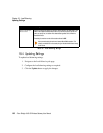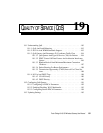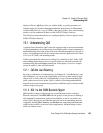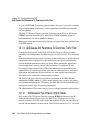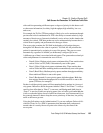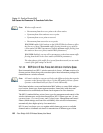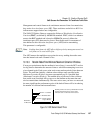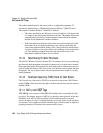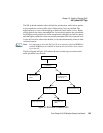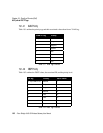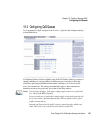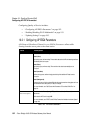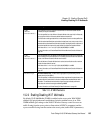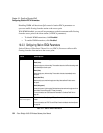Chapter 19: Quality of Service (QoS)
802.1p And DSCP Tags
188
Psion Teklogix 9160 G2 Wireless Gateway User Manual
The random backoff used by the access point is a configurable parameter. To
describe the random delay, a “Minimum Contention Window” (MinCW) and a
“Maximum Contention Window” (MaxCW) is defined.
• The value specified for the Minimum Contention Window is the upper limit
of a range for the initial random backoff wait time. The number used in the
random backoff is initially a random number between 0 and the number
defined for the Minimum Contention Window.
• If the first random backoff time ends before successful transmission of the
data frame, the access point increments a retry counter, and doubles the
value of the random backoff window. The value specified in the Maximum
Contention Window is the upper limit for this doubling of the random back-
off. This doubling continues until either the data frame is sent or the
Maximum Contention Window size is reached.
19.1.3.4 Packet Bursting For Better Performance
The 9160 G2 Wireless Gateway includes 802.11e based packet bursting technology
that increases data throughput and speed of transmission over the wireless network.
Packet bursting enables the transmission of multiple packets without the extra over-
head of header information. The effect of this is to increase network speed and data
throughput. The size of packet bursts allowed (maximum burst length) is a config-
urable parameter.
19.1.3.5 Transmission Opportunity (TXOP) Interval For Client Stations
The Transmission Opportunity (TXOP) is an interval of time when a Wi-Fi Multi-
media (WMM) client station has the right to initiate transmissions onto the wireless
medium (WM).
19.1.4 802.1p And DSCP Tags
IEEE 802.1p is an extension of the IEEE 802 standard and is responsible for QoS
provision. The primary purpose of 802.1p is to prioritize network traffic at the data
link/MAC layer. 802.1p offers the ability to filter multicast traffic to ensure it
doesn’t increase over layer 2 switched networks. It uses tag frames for the prioritiza-
tion scheme. To be compliant with this standard, layer 2 switches must be capable of
grouping incoming LAN packets into separate traffic classes.



